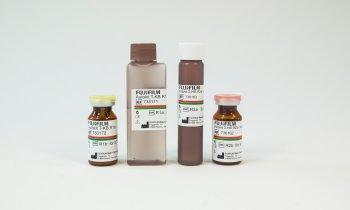Low compliance with guidance harms patients
By Henning von Eicke of Roche Diagnostics GmbH

The key to all successful therapy is a correct and timely diagnosis; yet the value of laboratory diagnostics is often underestimated. At least that’s the conclusion reached by an extensive analysis undertaken in the USA by a US consultancy, the Lewin Group (The Value of Diagnostics Innovation, Adoption and Diffusion into Health Care. July 2005). Although many recommendations made by the study cannot be translated one-to-one from the US to the various European healthcare systems, nonetheless the analysis is extremely interesting for our hospitals, doctors and healthcare businesses.
On average, diagnostics accounts for only five percent of the costs of hospital treatment, although the results affect 60–70% of healthcare decision-making in a hospital. Therefore, in any cost-benefit calculation of in vitro diagnostics, it is not the direct costs that are ultimately decisive, but rather the huge potential for lowering follow-up treatment costs in the subsequent course of a patient’s hospital stay. In the USA, for instance, there are some 1,230 evidence-based guidelines and, in more than one third of these, clinical laboratory tests play an important role. According to the US National Committee for Quality Assurance (NCQA), in 2004 alone, poor compliance with these, for diabetes, coronary heart disease, colorectal cancer and breast cancer, led to 56,200 avoidable adverse health events and 34,000 avoidable deaths. This translates into avoidable healthcare costs of 899 million US dollars.
The Lewin report cites case studies drawn from a thorough review of the literature to illustrate the impact of diagnostics on the quality of healthcare, the use of resources, the effectiveness of medical treatment and healthcare costs. According to the report, US hospitals, for instance, spend some twelve billion dollars annually on the hospitalisation of patients with a false-positive diagnosis of heart attack, while between two and ten percent of those patients who have in fact suffered a heart attack are mistakenly sent home again. Testing for troponin – the gold standard for diagnosing heart attacks – reduces treatment costs by 900 US dollars per patient compared with patients who are diagnosed only for standard parameters, such as creatinine kinase or myoglobin. According to the Lewin Group study, hospitals could save up to 30% of follow-up costs if they were to routinely test patients with acute chest pain for troponin in their emergency wards.
One informative case study – only published in 2006 and therefore not included in the Lewin report – discusses the laboratory marker NT-proBNP for the diagnosis of chronic heart failure. The Siebert et al. study (Cost-effectiveness of using N-terminal pro-brain natriuretic peptide to guide diagnostic assessment and management of dyspnoeic patients in the emergency department; Am J Cardiol 2006; 98: 800-805), describes 599 patients admitted to the emergency department with dyspnoea and then followed up over a period of 60 days. The study concludes that the costs of hospital treatment could be decreased by 9.4% if the doctors knew their patients’ NT-proBNP value. This decline in costs was due mainly to the shorter period of hospitalisation, but also to a 58% reduction in the use of echocardiography.
Contact: Henning.von_Eicke@Roche.com
01.05.2007










